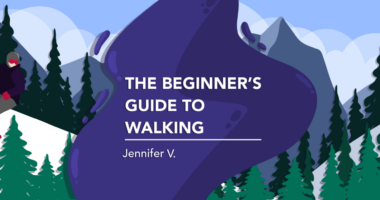NMOSD requires I have a strategy for conserving energy and resting
Understanding the body’s limits is key to energy management

Last weekend, my older brother and I took a sibling getaway to Tampa, Florida, for his birthday, something we’d never done before. I was excited for the chance to connect with him, but with only three days, we had to be strategic about fitting in all of the activities. Due to my excitement, I hadn’t fully considered how to balance the itinerary with what I needed to do to manage my neuromyelitis optica spectrum disorder (NMOSD).
Thankfully, old habits die hard, and just like when we were kids, my older brother was great at taking care of me. When we arrived, he made sure we had time to rest at the hotel, which was exactly what I needed after our flight.
Living with NMOSD means prioritizing rest and sometimes limiting physically demanding activities. One of the most effective ways to maintain overall well-being is through rest and energy conservation.
Mental clarity and emotional resilience
Understanding the body’s limits is key to energy management, although I’ve been known to push that boundary. Some days my body is generous and allows me to do more activities, while other days I require more rest. Unfortunately, I never know what kind of day I’ll have until it happens.
In my early days of NMOSD, I attempted to keep a journal of my symptoms in the hopes that I’d be able to identify patterns, but NMOSD is unpredictable. I eventually gave up trying to understand this disorder, and I’ve since come to terms with the reality that I need to give my body rest when it needs it.
One of my greatest challenges with NMOSD is the extreme fatigue it causes. My doctor prescribed modafinil, a sleep disorder drug that is supposed to help with the fatigue, but since I’m on so many medications that cause drowsiness, the balance isn’t in my favor. I do my best to make sure I get enough sleep every night, but it doesn’t always alleviate my NMOSD-related fatigue. Throughout my day, I must make time for rest, which can be as simple as lounging on the couch and watching Netflix. This improves my mental clarity and provides me with emotional resilience.
Over the years, I’ve developed some decent strategies to conserve my energy. The first thing I focused on was figuring out how to prioritize my everyday tasks. I’ve always enjoyed using a planner to see what lies ahead in my week, but with NMOSD, this tool has become quintessential to my daily existence. It’s equally important to avoid beating myself up if I don’t get everything on the list done. That’s why I prioritize things, so that if something doesn’t get done, at least it’s not high on my list of priorities and I can put it off until the next day.
Another strategy I use is to simply pace myself. I’ve made it a habit to break large tasks into smaller ones so that I can rest in between. If that isn’t possible, I’ll tackle only one large task or project at a time and everything else will wait.
Another key strategy to conserve my energy is being aware of my environment. I find it difficult to get proper rest in a messy bedroom or to be energized at a disheveled desk. It takes only a few minutes to clean my personal space, and it eases my anxiety.
Rest and energy conservation are essential for managing NMOSD and maintaining a fulfilling lifestyle. Implementing a few strategies gives me a good chance to reduce fatigue and enhance my well-being. I used to think of self-care as a luxury, but I now view it as a necessity. Prioritizing rest has allowed me to live life on my own terms, even with NMOSD.
Note: Neuromyelitis News is strictly a news and information website about the disease. It does not provide medical advice, diagnosis, or treatment. This content is not intended to be a substitute for professional medical advice, diagnosis, or treatment. Always seek the advice of your physician or other qualified health providers with any questions you may have regarding a medical condition. Never disregard professional medical advice or delay in seeking it because of something you have read on this website. The opinions expressed in this column are not those of Neuromyelitis News or its parent company, Bionews, and are intended to spark discussion about issues pertaining to neuromyelitis optica spectrum disorder.






Leave a comment
Fill in the required fields to post. Your email address will not be published.